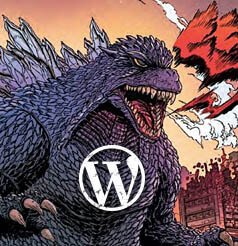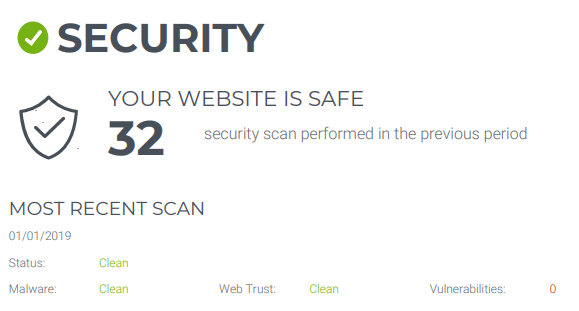WordPress “themezilla” will feed you to its offspring for breakfast and then eats its offspring for lunch! It’s an over-developed beast that can sometimes get you into a costly mess down the road.
If you’re reading this post, you probably already know that WordPress is one of the most popular web design platforms available today and that the platform design is driven by themes. I often tell clients, a theme is like the floorplan of your house – it determines your layout, design features and flow. We become the architect and interior designer in this scenario, branding your website and tuning the site features to your business needs. WordPress themes come in many, many different shapes and sizes – there are tens of thousands of themes available to your developer to build your WP framework upon. Fancy pants designers may even create their own theme for your site.
Developer Knows Best?
Great! Your developer knows best right? Usually this is the case, and of course they have your best interest in mind. But there are things that you need to know before you get in bed with any WordPress theme. Trust me, Themezilla makes a feisty bed fellow. You may be the type of person that just does not want to know what is going on behind the scenes during your web build – and guess what, us developers prefer you that way… BUT, at least get armed with enough knowledge to know what your website’s future holds for you. Don’t get built out of the box from the very beginning UNLESS that is exactly what you want and need for your business.
Get Educated
WordPress themes should be well documented and well supported – they need to be hearty enough to keep track with WordPress core software updates which get released from the development community every 4-6 months. It’s possible that when WordPress updates and your theme does not, over time your website can break. All good developers know this and so theoretically you should not find yourself in these shoes, but you’d be surprised what we encounter.
The theme you choose should reflect your hopes and dreams for your website’s future or at the very least your dire business needs today. Some businesses are running complex web operations and require a very customized solution – you know who you are and you also know you’ll be married to your developer or someone just like them forever. Get comfortable in those shoes. But most of you don’t need the complexity and hope your website remains high performing and relevant for many years to come – right? This post is for you folks.
To meet those requirements, your theme should pass this test with flying colors.
- It has the features and tools that meet your business requirements
- It has an active support community
- It is well documented and supported
- It regularly releases updates that keep it compatible with the most recent WordPress software versions
- It has a responsive design
- It allows for a child theme
- It is not dependent on plugins that may become outdated or unsupported
- It offers an interface that makes it easy for you to manage your content
Now, you may be able to check all these items off the list but still be faced with a themezilla. This comes into play when your developer adds design or functionality customizations to your theme that stop it from becoming easily updatable. I’m not saying customizations are a bad thing – they are actually required in many cases, you just need to be aware that you have them and you need to know how or if it will affect your site’s future.
Smite the Over-developed Beast
First – be aware of the fact that you have a customized theme. If your WordPress theme will not be easy to update without the exclusive help of the developer that built your website, you should know that upfront. Second, regardless of the great relationship you have today, make sure your customizations are well documented by your developer. If at any point you fall out of love in the future (it happens people), you will at least have a road map for your next developer to jump on board running. If your developer uses a child theme or builds theme insulated customizations – you typically won’t run into these themezilla issues. If they just can’t do it that way to deliver on your requirements – at least you should know so you’ll be prepared for potential future costs.
A Winning Scenario
The best case scenario, and what we strive to deliver, is a killer WordPress website that rocks a powerful and well supported theme and plugins which we regularly maintain. Our clients are delivered websites that have software, plugins and a theme that are updated regularly by necessity and stay modern and relevant because of that. In fact, if you buy a WordPress website and your developer does not propose a maintenance plan for your site, it might be a red flag. WordPress software, as I mentioned, updates every 4-6 months, I regularly install plugins that push updates every 2-4 weeks and we use themes that push updates in the same timeframe as WP, sometimes even more often.
Imagine for a moment, you never update your WordPress website over two or three years….
Sometimes I encounter sites that are either so geeked out with customizations (that were not really necessary to begin with) or so out of date that it takes me less time to deliver a brand new website than untangle that crazy mess. No joke.
Don’t find yourself here in two years, just don’t.






